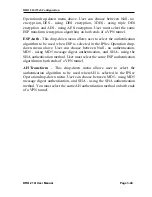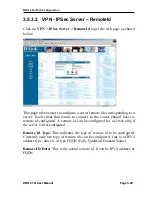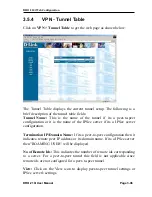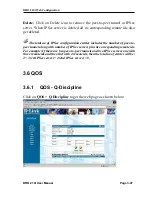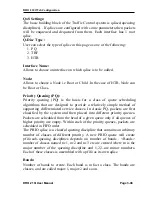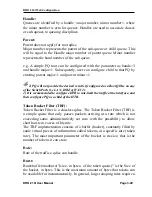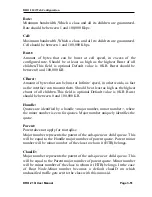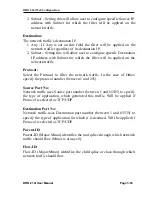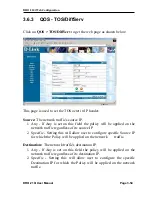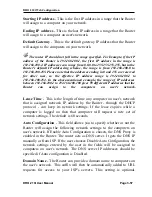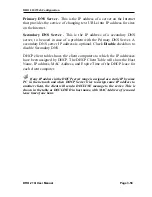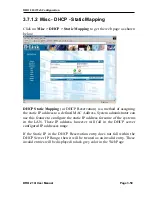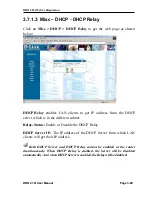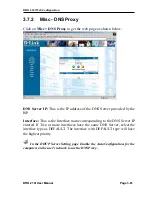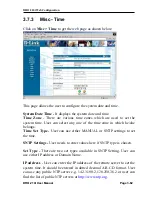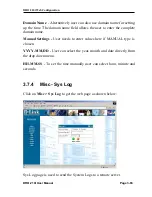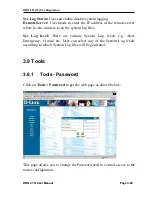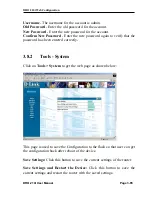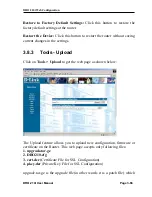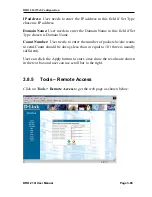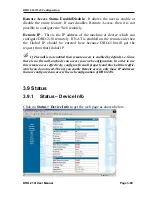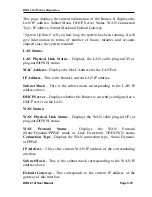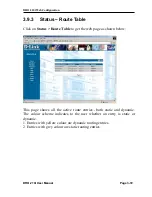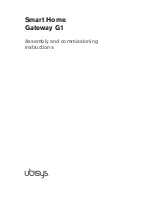
DRO-210i Web Configuration
DRO-210i User Manual Page 3-57
Starting IP address
- This is the first IP address in a range that the Router
will assign to a computer on your network.
Ending IP address
- This is the last IP address in a range that the Router
will assign to a computer on user's network.
Default Gateway
- This is the default gateway IP address that the Router
will assign to the computers on your network.
The router IP should not fall in the range specified. For Example, if the IP
address of the Router is 192.168.100.1, the first IP address in the range is
192.168.100.2. IP addresses can range from 0.0.0.0 to 255.255.255.255, but in the
Router's default IP addressing scheme, the range is from 192.168.100.0 to
192.168.100.255. Please note that the addresses ending in 0 and 255 are reserved
for other uses, so the effective IP address range is 192.168.100.1 to
192.168.100.254. In the above-mentioned example, the range of IP addresses
between 192.168.100.2 to 192.168.100.100 gives 99 different IP addresses that the
Router can assign to the computers on user's network.
Lease Time
- This is the length of time any computer on user's network
that is assigned network IP address by the Router - through the DHCP
protocol - can keep its network settings. If the lease expires while a
computer is logged on then that computer will request a new set of
network settings. The default is 60 seconds.
Auto Configuration
- This field allows you to specify whether or not the
Router will assign the following network settings to the computers on
user's network. If Enable Auto Configuration is chosen, the DNS Proxy is
enabled in the Router. The router acts as DNS server. It gets the DNS IP
manually or from ISP. If the user chooses Disable Auto Configuration, the
network settings entered by the user in the fields will be assigned to
computers on user's network. The DNS server IP addresses should be
specified if Auto configuration is Disabled.
Domain Name
- The Router can provide a domain name to computers on
the user's network. This suffix will then be automatically added to URL
requests for access to your ISP's servers. This setting is optional.


